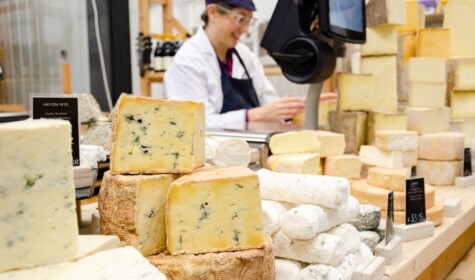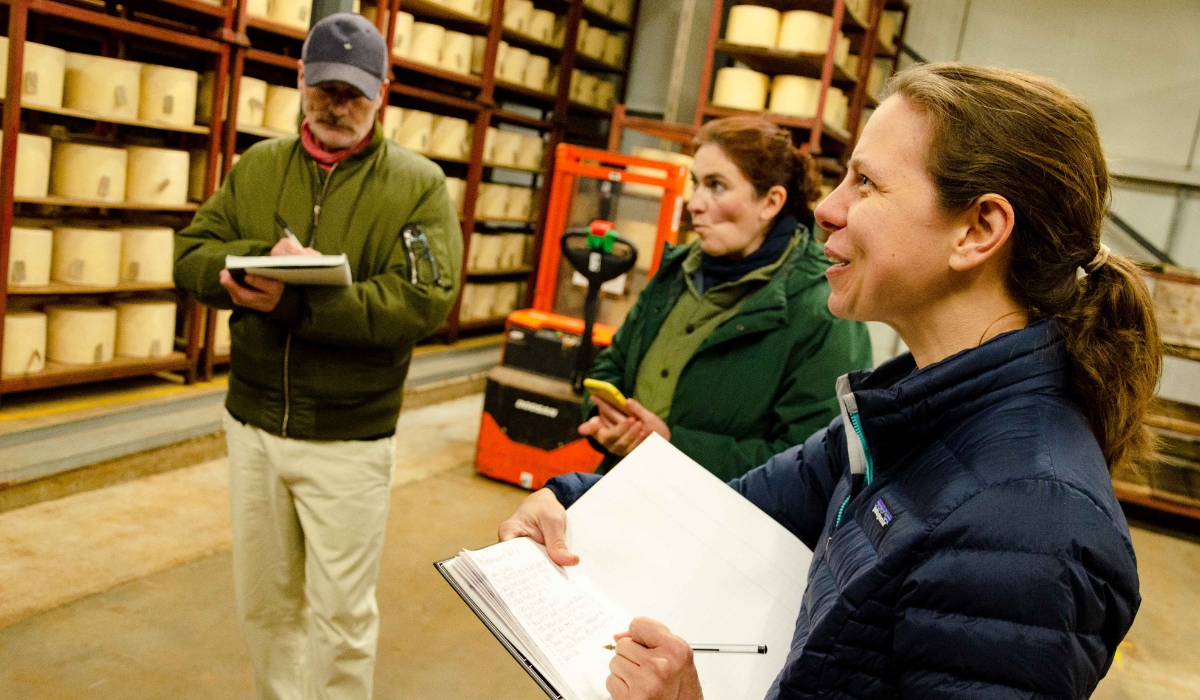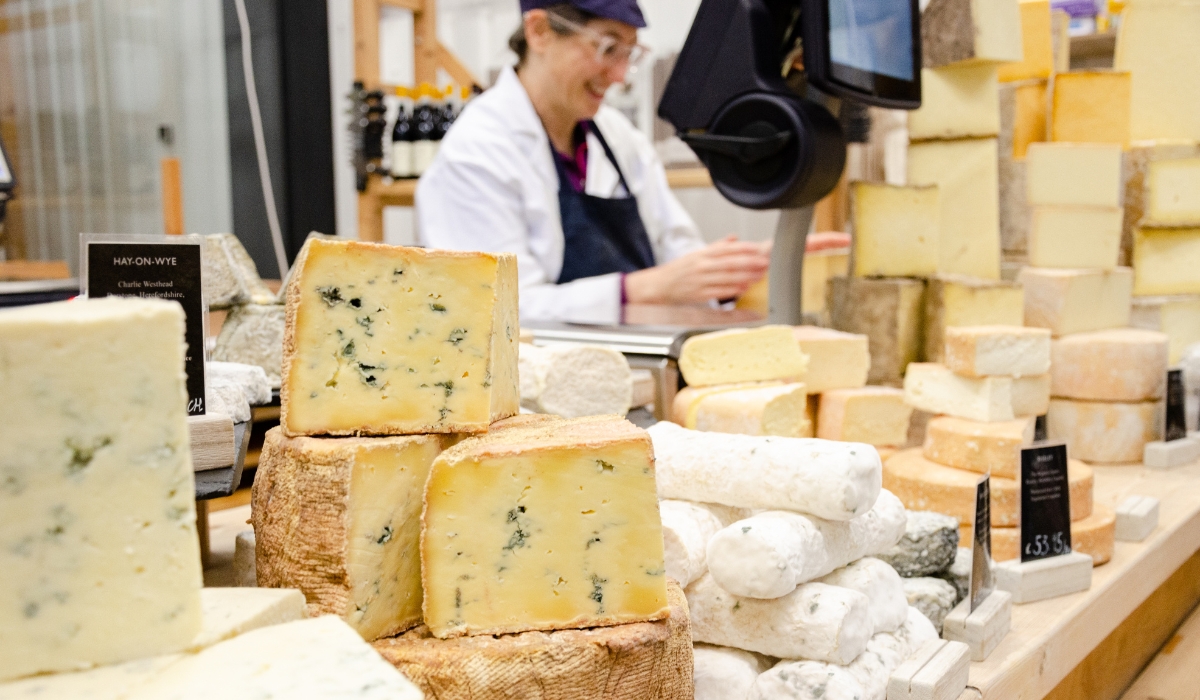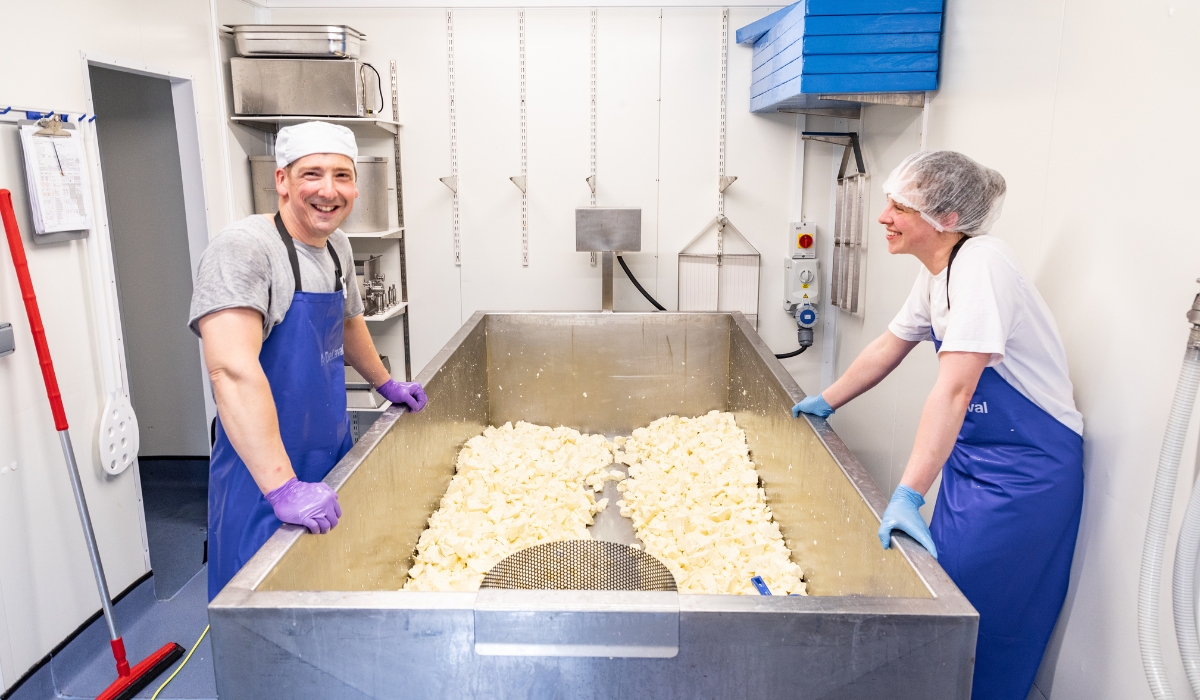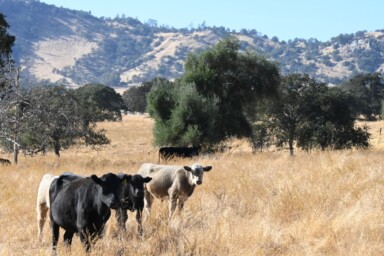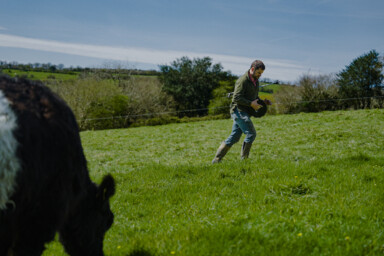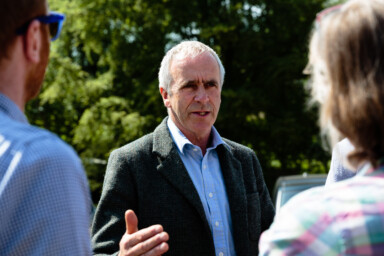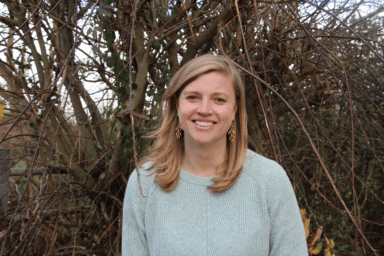Bronwen Percival is the Buyer and Technical Director at Neal’s Yard Dairy. She’s been engaged with artisan cheese since she started as a cheesemonger at the Dairy. Not a native to the UK, she grew up in San Diego, California, where her grandfather was a dairy producer. She works with over 40 cheese producers across the UK and Ireland and has co-authored ‘Reinventing the Wheel: Milk, Microbes and the Fight for Real Cheese’ with her husband Francis Percival.
SFT: Many people are aware of the leadership that Neal’s Yard Dairy (NYD) have shown not only in convening the artisan cheese making community of the UK but also in developing markets for named artisan cheeses based on the story behind their production – not just in the UK but throughout the world. What are the motivations that inspire you and your team to do this work?
Bronwen Percival: I think there are a number of different ways to answer this question, because we all have many, many motivations. The whole idea of connecting a name and a story to a cheese as it gets to the market, is quite transformative for British cheese. In some ways it’s antithetical to commodity production which is all about taking interchangeable raw materials and turning them into interchangeable non-differentiated cheese – along that path, a lot of those farmhouse cheeses lose the identity that is associated with the producer.
It’s not enough to just sell cheese; what’s really important is to sell that cheese connected to an individual identity that meets the market and where excellent quality is therefore rewarded because people will come back and ask not for Neal’s Yard Dairy cheddar but for Hafod cheddar or Montgomery’s cheddar. That was pretty radical in the late 1970s and early 80s when Neal’s Yard Dairy got started in Covent Garden. It’s less radical today, but I still feel it’s fundamental to what we do. We’re the bridge between the individual small producers and the market and we are tasting every batch and talking to customers about how each batch is different and trying to match the right cheese to the right customer. It’s that simple.
There’s also another way to answer that question, which is that diversity is an important thing. We talk about the importance of diversity in a field with different types of plants or the diversity of the genomes of the cows that [make our cheeses], but we live in a world of rapidly reducing diversity and the same applies to the market. Losing that diversity, as businesses scale up and we get fewer options, is a real risk to our food system and it’s a risk to taste and flavour as well.
So, the work that we do is really about protecting that diversity. Championing that within the market sometimes means selling tiny amounts of cheeses that are made in [small-scale] production. I don’t know how financially viable that is, because, at the end of the day, they’re only a minute fraction of what we do, but it’s still a really important part of our mission and it’s what will set us apart.
“We’re the bridge between the individual small producers and the market and we are tasting every batch and talking to customers about how each batch is different and trying to match the right cheese to the right customer. It’s that simple.”
SFT: We know that your operation includes retail, wholesale and export, but what is the ratio of sales in each area and which countries buy cheeses from NYD?
BP: That’s a very good question! It’s split – about 25% of our sales are through our retail shops in London. We have three shops and another one possibly on its way and we have an ecommerce department, which is a form of retail as well. Fifty percent of our sales go through our domestic wholesale to shops and restaurants all over the UK, and the final 25% is on export. That’s as a percentage of the volume of the cheese.
Which countries buy cheese from NYD? We ship cheese all over the world. We sell cheese to the US, throughout Europe, Australia, Singapore, Hong Kong, and some goes to Peru and Japan. It’s kind of an eclectic mixture.
But when people flippantly say, ‘oh, we’ll find other markets abroad’, I think they are forgetting that [continental] Europe is an incredibly sophisticated market when it comes to cheese consumption. People eat cheese seriously, more seriously than we do here in the UK.
